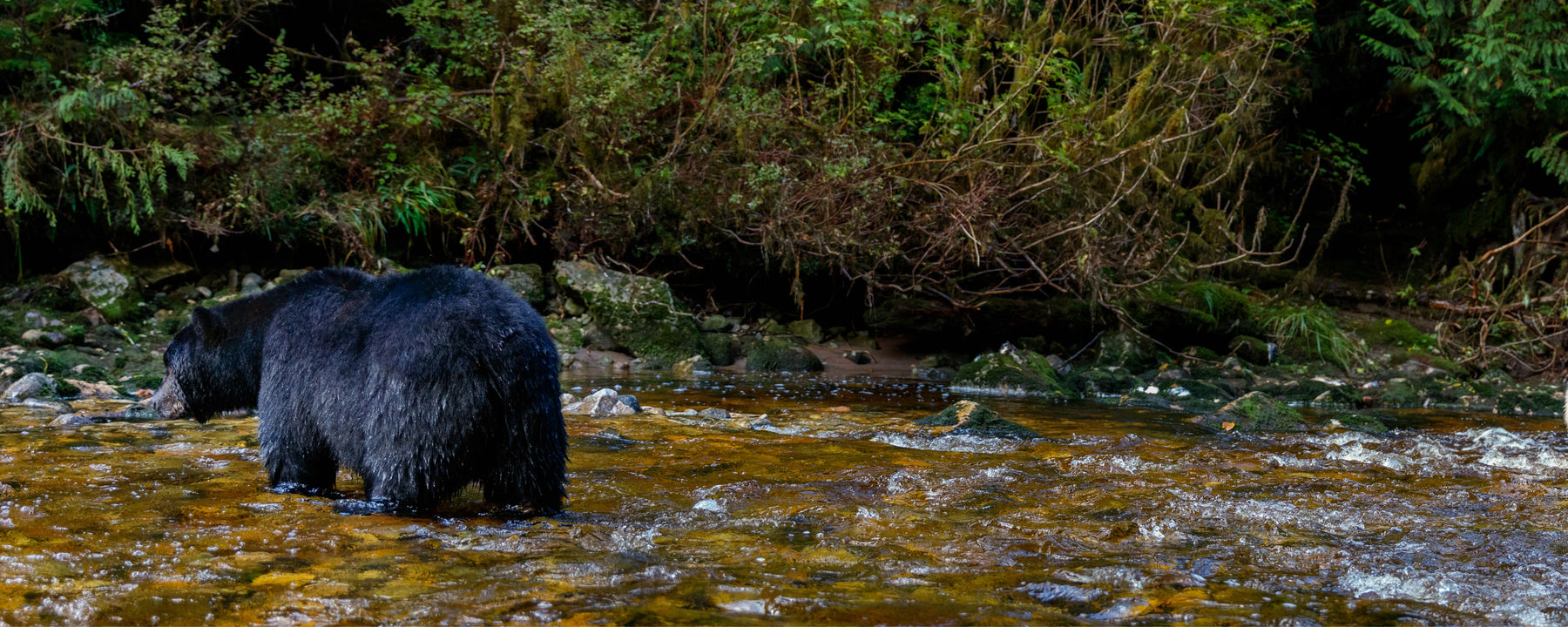
The black bear, a big beast with many assets!
Ants on the menu
The most common of North American bears, the black bear is considered, from a biological point of view, to be a carnivorous mammal. However, in reality, it is more of an omnivore who knows how to take advantage of the numerous food resources that the forest offers. Carrion, small mammals, herbaceous plants and small fruits are part of its menu. Recent studies have also shown that ants make up a large part of its diet.
In recent years, we have noticed that the black bear population in the province seems to be increasing. Some hypotheses have been put forward to explain this phenomenon, but it could be that climate change is the cause. Indeed, the milder seasons would allow bears to leave their dens earlier and enter them later. Thus, they would benefit from a longer feeding season, which would allow better-fed females to produce more cubs.
Don’t panic!
Nuisance bears constitute a significant public safety issue. During the summer, wildlife protection officers often have to intervene to help citizens dealing with overzealous bears by capturing them and relocating them elsewhere in the forest. However, this strategy is not foolproof. Some very motivated bears have traveled more than 200 km to return to their starting point.
Sport hunting, practiced according to the rules, helps control the population of this species, while ensuring its viability.
To coexist peacefully with this generally timid and discreet beast, it is important not to leave food behind in the forest, while camping or at the cabin.
Delayed reproduction
A fascinating biological phenomenon occurs in the black bear's reproductive cycle. Indeed, females are able to carry out delayed implantation of the embryo. In a few words, after mating which occurs in June or July, the fertilized egg develops for a few days after which it falls dormant. Then, about four and a half months later, if the physical condition of the female allows it, it will implant itself definitively in her uterus where it will develop until February, the usual period of birth.
Incredible facts!
- Its non-retractable claws, although formidable weapons, are more intended to dig and search the ground and stumps in search of its food.
- The black bear, like many mammals, is color blind; he does not distinguish colors.
- The black bear is among the most intelligent mammals. He is also an excellent swimmer and a skilled climber. Over a short distance, its “sprints” can reach 55 kilometers per hour.
- Labor takes place in winter, while the female is sleepy. Instinctively, the young, naked and blind, will head towards her teats where they will attach, feeding if necessary on mother's milk until spring.
- Helped by its flexible lips and tongue, the black bear can eat very small foods such as blueberries or insects.
Although peaceful in temperament, the bear can sometimes be belligerent. You must be vigilant when in the forest. It is important to always be careful not to leave food behind when you are in the forest, camping or in a cabin. These should be in airtight containers and out of reach of these thieves.
A venison to discover
For many hunters, bear meat is the best venison you can find! It is simply a matter of ensuring that its cooking temperature rises above 77° Celsius (170° Fahrenheit) to avoid the transmission of the microscopic parasite responsible for trichinellosis, which still affects less than 2% of bears. In short, as is the case with many venison, well-cooked bear meat is safe.
To find out more about this species and know the right behaviors to adopt for trouble-free cohabitation, visit the page “Vivre en sécurité avec l’ours noir? Une question de responsabilité” (french only) of the Ministry of Forests, Wildlife and Parks.


